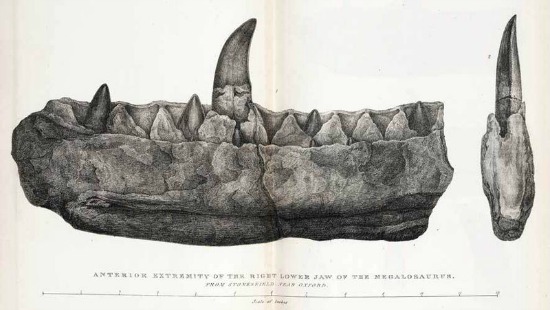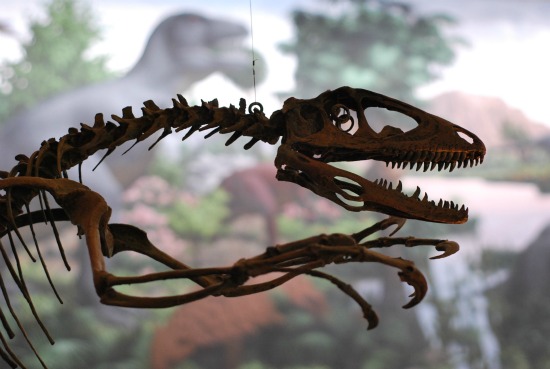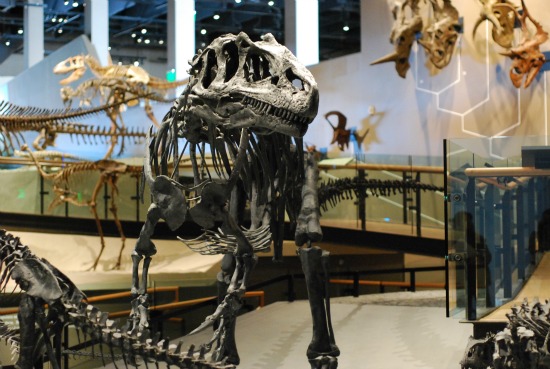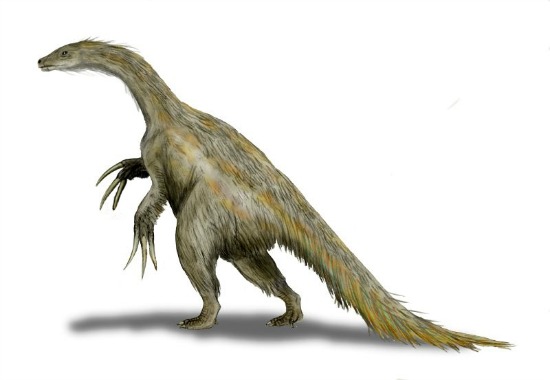Scientists probe link between magnetic polarity reversal and mantle processes
Updated: 2012-07-31 15:00:37
Scientists at the University of Liverpool have discovered that variations in the long-term reversal rate of the Earth's magnetic field may be caused by changes in heat flow from the Earth's core into the base of the overlying mantle. read more

 Even though scientific interest in dinosaurs is relatively new, our species have been puzzling about the prehistoric creatures for centuries.
Even though scientific interest in dinosaurs is relatively new, our species have been puzzling about the prehistoric creatures for centuries.  Will we ever find out what Augustinia looked like?
Will we ever find out what Augustinia looked like? 27 July 2012
Further study by scientists of a fossil specimen originally found over 100 years ago has revealed a new type of snake that would have lived at the same time as T rex. Named Coniophis the snake is an exciting find as it is a transitional species showing features of both snakes and lizards. Coniophis is 60 centimetres long and has the body of a snake and the head of a lizard.
70 million years ago Coniophis could easily have slithered around the feet of T rex and other dinosaur. It was a burrowing snake and is unlikely to have been preyed on by dinosaurs. It was not poisonous as this is something that did not develop until much later in snake evolution.
27 July 2012
Further study by scientists of a fossil specimen originally found over 100 years ago has revealed a new type of snake that would have lived at the same time as T rex. Named Coniophis the snake is an exciting find as it is a transitional species showing features of both snakes and lizards. Coniophis is 60 centimetres long and has the body of a snake and the head of a lizard.
70 million years ago Coniophis could easily have slithered around the feet of T rex and other dinosaur. It was a burrowing snake and is unlikely to have been preyed on by dinosaurs. It was not poisonous as this is something that did not develop until much later in snake evolution.
 An enthusiastic dinosaur fan takes his passion to the web
An enthusiastic dinosaur fan takes his passion to the web In Alberta, unknown vandals smash a priceless dinosaur skeleton
In Alberta, unknown vandals smash a priceless dinosaur skeleton In 1994, paleontologists made a discovery that turned one dinosaur’s name into an irony. That dinosaur was Oviraptor – the so-called “egg thief” discovered several decades before, but that turned out to be a caring mother. The story starts in 1923. In that year, an expedition from the American Museum of Natural History discovered dinosaur [...]
In 1994, paleontologists made a discovery that turned one dinosaur’s name into an irony. That dinosaur was Oviraptor – the so-called “egg thief” discovered several decades before, but that turned out to be a caring mother. The story starts in 1923. In that year, an expedition from the American Museum of Natural History discovered dinosaur [...] Huge dinosaurs like Diplodocus couldn't chew, so how did they eat?
Huge dinosaurs like Diplodocus couldn't chew, so how did they eat? There are probably hundreds of dinosaurs that paleontologists have yet to discover, but will we ever find all the dinosaurs?
There are probably hundreds of dinosaurs that paleontologists have yet to discover, but will we ever find all the dinosaurs?  A rare footprint places a strange group of dinosaurs in Cretaceous Alaska.
A rare footprint places a strange group of dinosaurs in Cretaceous Alaska. A newly-discovered fossil raises the possibility that all dinosaur lineages were fuzzy.
A newly-discovered fossil raises the possibility that all dinosaur lineages were fuzzy.